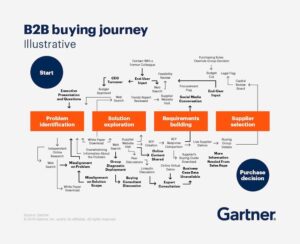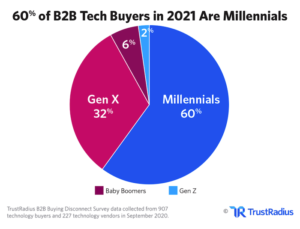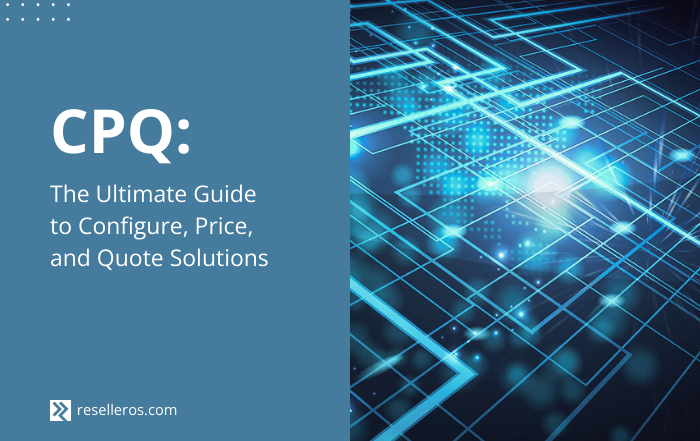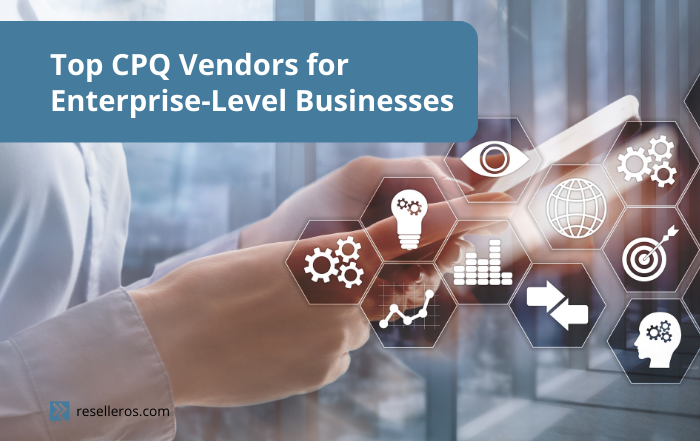7 Stages of the B2B Sales Cycle You Should Optimize
The sales process is continuously evolving. You need to fine-tune your B2B sales cycle if you want to keep up or gain an edge over the competition.
With innovations in products and technologies, even experienced salespeople need to react fast and take calculated steps to meet their customers’ demands. With the COVID-19 pandemic, there was a significant shift in how businesses operate. Business leaders must find ways to stay relevant, retain and find new customers, and keep a good cash flow.
B2B Sales Transformation
Like any other sales process, the ultimate goal of B2B sales is to get a contract signed. However, to get there involves a process of building trust and reassurance that your products or services are the right fit for your customer. Typically, the journey involves the following stages:
- Prospecting
- Discovery
- Qualification
- Sales Pitch
- Negotiation
- Closing
- Follow-up
While the above steps sound like a smooth journey from saying hi to hearing the cash register bell, that isn’t the case today. According to a study, B2B buyers today only spend about 17% of their time meeting with potential suppliers. When comparing suppliers, the amount of time with your sales team is down to 5% or 6%.
B2B sales cycle today involves customers with easy access to information. About 27% of their time gets spent researching independently online and 18% researching offline. However, 77% of these buyers still find their purchase difficult or complex. Thus, there’s the need to guide them with the correct information across the complicated buying loop.
Amid the transformation of the B2B sales process, there are also current trends and challenges that B2B sales team and marketing must address to close deals faster.
Current Trends and Challenges in B2B Sales
Whether you’re the chief strategy officer, the champion of client services, or someone looking to find ways to improve your B2B sales process, you need to keep up with the trends and meet today’s challenges.
Changing Buyers Persona and Finding Qualified Leads
Millennials are taking over the B2B market. About 51% of lead buyers and financial approvers belong to the tech-savvy generation aged 25 to 39. They don’t easily trust sales reps and your sales materials and would rather look at reviews instead of trusting analyst reports. The B2B buyers today want more flexible pricing, free trials, self-service, and better customer support.
Buyers today also want an Amazon-like customer experience. Gratification must be immediate, or they can jump to the next potential vendor.
Remote Selling
Around 90% of B2B transactions have transitioned to virtual sales. Such a shift was a necessity because of the COVID-19 pandemic and the consumerization of the B2B sales process. Business leaders realize the importance of their digital transformation efforts but are also pondering how to make the most of their sales team across different channels.
AI
In 2018, 30% of B2B marketers used AI to personalize the sales process and customer journey. Come 2030, artificial intelligence may drive the global GDP up by 14% or roughly $15.7 trillion. More businesses are adopting AI, and how to leverage these technologies to get a bigger share of the pie is a challenge for every sales and marketing team.
AI can be your partner in understanding big data about your customers and derive actionable insights from such information.
Hyper-Personalization
The demand for personalized customer experience brings front and center the importance of customer relationship management (CRM) tools. CRM solutions can aid the B2B sales process by bringing data from different silos of your business together. Integrating information from marketing, sales, social media, customer support, and others can help you understand customers better.
A good CRM can help you precisely answer customers’ needs and foster a relationship that can help improve your bottom line.
7 Stages of B2B Sales Cycle and How CRM Can Help
Designing a proper customer journey helps prevent leads from losing interest and leaking off the sales pipeline. A CRM solution can help efficiently manage the sales cycle, empower sellers in guiding potential customers, provide insights from all directions, and forecast trends.
1. Qualify Your Leads
During prospecting, your sales and marketing team must be able to spot the sales leads who are likely to click that buy button. This allows you to spend time with the leads that are likely going through the sales process. Your CRM solution can score your leads and automate the process for you. This way, you can focus your efforts on converting that lead into a sale.
2. Nurture Potential Leads
Not all leads that drop at the entrance of your sales funnel are interested in buying. These leads should be nurtured. Prepare them for the future buy they will make by providing them with the details they need, content that can wow them with your products and services, and be consistent in engaging them to build trust. You can do all of these in a good CRM.
3. Identify Potential Pain Points
As you go to pitching and negotiating, you need a well-defined process that your whole team understands. The sales process should match the customer journey you want to design for your B2B customers.
Your CRM solution can help build your sales process. You need to define the opportunity stages, define the sales process stages, add features to the process, and add materials that can help your sales team at each stage of the sales cycle.
4. Pipeline Management
A CRM can give you access to a treasure trove of data about your customers, your performance, and all other factors affecting your sales cycle. Aside from producing reports, you can dive deeper to understand the numbers better and see how you can use such insights to make the sales process faster.
5. Knowledge and Skills Enrichment
Checking on how your sales teams are doing is not enough. You need to equip them so they can make the sales and rake in sales. Go over the actionable insights you have gathered with them to have a clear picture of what they need to do and how the market is behaving during a specific period.
6. Engage with Your Customers
Your sales and marketing team must spend more time with the customers. Streamline your processes so your people don’t get trapped in their email cycles or unnecessary meetings. You need a good measure of how much time people spend on their inboxes, phone, or actual interaction with the client. Aim to increase such interactions on a monthly or quarterly basis.
7. Track Your Sales and Monitor Your Activities
Upon closing the sale, you need to make sure your customers are happy with your products. You need to follow up. You need to understand the data coming from end-users. Check the issues they are raising, features they need, among others. This can help you make your offerings better. With exemplary customer support, you can also improve brand loyalty and generate more sales in the future.
Rainmaker can Help Optimize Your Sales Cycle
At Rainmaker, we offer transformative solutions that can help you improve your sales process to increase revenue.
We do this by making use of our expertise in Salesforce, the leading CRM solution today. We can help with industry solutions, technology expertise, delivery capabilities, and Salesforce-managed services.
Find out how Rainmaker can empower your team. Contact us today!








